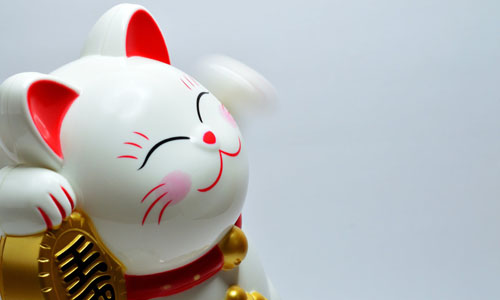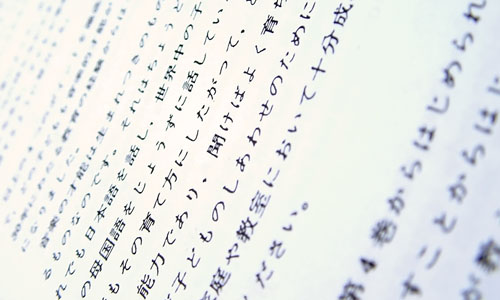Professional Chinese-Japanese Translation Company
Translation from Chinese to Japanese or from Japanese to Chinese is one of our major services. Although there are many similarities between these two languages, such as written characters, some pronunciations, and background cultures, there are lots of distinctions between them. A good Japanese-Chinese translator should be well-informed about grammar rules, language skills, and specific field knowledge to master the expertise. Experienced in translating or interpreting documents, events, legal contracts, or marketing materials between Chinese and Japanese, our native language team is good at handling all sorts of linguistic projects with their language competence and high-quality standards. Contact us now for a free quote.

Why Choose Us
More
We set a strict standard for translator/interpreter recruitment in which only native speakers and experienced linguists are allowed to enter our service team. We understand that only in-country translators can manage cases like expressions, idioms, jargon, and language habits in your document.
Besides the necessary quality standard we set for translation members, the management system based on our team construction or project process is also first-rate. Our PMs are prominent in unifying the working streamline as well as implementing the translation standards or principles.
Proofreading is an essential part of raising the overall quality of your translated document. In this section, we are using senor proofreaders and AI technologies at the same time. Any wording mistakes, grammatical errors, improper styles, or misused terms are detected and corrected to improve accuracy further.
More
As our customer, you do not need to transfer the format of your document before sending it to us because we accept them all. Whether it’s a scanned image, a data table, or a raw file, our engineers can change them into something that is editable. Meanwhile, you can send us data via email, chat, online apps, or any channel that you think is convenient for you.
We cover a one-year warranty for all translated documents between Chinese and Japanese. We include that item in our after-sales service since we value every opportunity to do the best work not only for translation quality but also for customer experience.
Once you have contacted us with your translation requirement, an exclusive customer manager shall be assigned to process all connections (both internal and external). Through that, you can enjoy the best communication experience for any issue during the translation period.
More
Jinyu is expecting long-term Cooperation from you as we are well-prepared for document consistency over time. It is not easy to always provide a translation that keeps the persistent style with the historical works. That is why big businesses such as Huawei and Alibaba are willing to establish a partnership with us.
One of the most important reasons for our translation consistency is our document archiving plan. If a long-term translation partnership is confirmed, we deploy strategic resources (special translation team, translation memory database, project corpus base, etc.) throughout the full Cooperation.
Meanwhile, thanks to the internal management system, our customer relation ERP is applied for every business information extracted from daily transactions. That job is strenuous for our team but vital when looking ahead to the future. Contact us now for a delicate translation.
Jinyu’s Chinese-Japanese Translation Insights
1. Differences Between Japanese and Chinese
For Western readers, Japanese and Chinese are alike: these two languages are bizarre in pronunciation and share a similar written form (square character). There are many differences between Japanese and Chinese. Here are some:
- Sentence structures. Like English, most of the Chinese sentences are ordered in “SVO” (Subject Verb Object) form, while a Japanese sentence is ordered in the “SOV” type.
- Changes at the end of sentences. Japanese belongs to an agglutinating language in which changeable sentence rears are applied to indicate tenses, tones, and many other forms.
- Kanas and Chinese characters. Japanese written forms contain Chinese characters and kanas, in which Chinese characters are often dissimilar from those used in China, and they act as nouns in most cases.
more
- Tenses. There may be tenses in Japanese but not in Chinese. The tense-related changes in Japanese (verbs, orders, and appended elements) are more complemented than those in English.
- Borrowed words. There are lots of borrowed words in Japanese which are expressed in katakana forms. Accordingly, nouns in katakana forms are mostly used to describe newly emerged things, such as “バナナ (banana)”, “コンピューター (computer)”, “パスポート (passport)”.
- Pronunciations. Even if a word has the same written form in Chinese and Japanese, they don’t share the same meaning on most occasions. Most importantly, 99% of them are not pronounced the same.


2. Japanese to Chinese Translation strategies
When translating from Japanese to Chinese, our language team uses a series of strategies to overcome the language obstacles:
- Preparing well for both language skills and relevant knowledge. To become a successful Japanese-Chinese translator, one should have great expertise in grammar rules, expressions, and cultures of the target language and source language. Meanwhile, we must obtain a large amount of information or knowledge of political, economic, cultural, and technological aspects.
- Focusing on keywords. The article is composed of several sentences, and the vocabulary constitutes the sentence. Therefore, we can capture the critical information of the sentence by grasping each sentence’s keywords when translating.
more
- Understanding the logical thinking manner of Japanese/Chinese. Logic is the reflection of people’s way of thinking in language. When translating between Japanese and Chinese, determining the level of processing and structural arrangement of the target sentence based on the inherent (including explicit and implicit) logical relationship of the original sentence is the logical thinking of translation.
- Strategically using translation skills for long sentences. In Japanese sentences, the predicate is placed behind, and the subject and object are often omitted, which makes the translation of long sentences more difficult. Therefore, properly using some translation skills such as splitting translation, merging translation, omitting translation, and reversing translation is helpful.
3. Chinese-Japanese Translation Examples
Here are some of the examples of our recent Chinese-Japanese translation projects:
この方式は伝動効率、構造および配置の簡単さ、価格などの点から最も広く採用されている。
四塩素化炭素とメチルクロロホルムも同様、成層圏の塩素酸化物に影響を与えることが、相次いで指摘された。
昨年に比べれば、原油と天然ガスの産出量はそれぞれ28%、23%の伸びをみせた。また、製油技術も先進的な水準に達するようになった。
more
前節で述べた構造解析の結果、鞭毛モータには回転に必要な 2 と 4 の遺伝子からできたタンパク質が含まれていないことが明らかになった。モータの機能にとって不可欠の要素が、鞭毛モータを精製する過程で脱落したと考えられる。その意味では、今まで述べた鞭毛モータはモータの一部であって全部ではない。モータが回転するためには回転子と固定子が不可欠である。Mリングを回転子とすると、鞭毛モータの固定子はいまだに見つかっていない。


4. How we Perform Chinese-Japanese Document Translation
To obtain a high-quality translation, we have a highly streamlined working process for our Chinese-Japanese translation projects. Whether it is a massive package of engineering documents, pages of certified material or a business contract, our linguists always stick to the following workflow:
- Project preparation (task preview, resource attaching, job assignment, file uploading);
- Translation (Trados GroupShare Cloud Server Based);
- Finishing (editing and evaluating by peer human-revising and automatic correcting);
- Proofreading (checked by PM or senior proofreader to inspect accurateness, consistency, tones, and styles);
more
With the help of our Trados GroupShare Cloud Server, the big Japanese-Chinese translation projects become easy to:
- Overall Preview (word count, translation element, memory matching);
- Resource Uploading (industry-based memory database syncing, glossary uploading, user-generated term updating);
- Task Splitting (finished by team leader manually, with each packet connected by 1 or 2 spare translators);
- Process Tracking (online progress visible for Trados users);
- Online Cooperation (multiple linguists can do one project segment);
- Daily Internal Meetings (both online and offline to exchange ideas on translation styles difficulties based on specific projects.);
- Cross Proofreading (This process is before our senior or PM proofreading as online coordination is smooth);
5. How we Prepare for QA Implement, Emergency, and Chinese-Japanese Translator Evaluation
We have termbase specialists responsible for collecting data from each project, so our memory database and termbase are project-based or company-based rather than industry-based to ensure accuracy. For those emergency events like server downtime, connection dropping, or abruptly increasing translation demand, we combat them beforehand. Meanwhile, we have a technology department that quickly deals with network issues and new hardware & software issues. As Jinyu has more than 15 years of translation experience, our secure local connections always allow us to have 50% – 200% additional translation capacity.
more
We perform strict standards for our recruitment based on educational background, translation experience, interpersonal skills, and industry knowledge. Our internal linguist evaluation criteria include:
- Blind Test (language, translation);
- Monthly Performance (output, error rate, resource contribution);
- Interactive Record (daily meeting suggestion, linguistic dialogue, management-related understanding);
- Customer Satisfaction Rate (we have a rotation mechanism for project manager appointments so that it is easy to track based on specific projects);
- General Qualifications (diplomas, years of working experiences, subject-matter working background, historical working experience);
Please contact us for an excellent Chinese-Japanese translation service.

More of Our Chinese-Japanese Translation Services
- Chinese-Japanese Legal Translation
- Chinese-Japanese Medical Translation
- Chinese-Japanese Technical Translation
- Chinese-Japanese Financial Translation
- Chinese-Japanese Literary Translation
- Chinese-Japanese Marketing Translation
- Chinese-Japanese Advertising Translation
- Chinese-Japanese Sworn Translation
- Chinese-Japanese Certified Translation
- Chinese-Japanese Notarized Translation
- Chinese-Japanese Conference Interpretation
- Chinese-Japanese Consecutive Interpretation
- Chinese-Japanese Simultaneous Interpretation
- Chinese-Japanese Whispered Interpretation
- Chinese-Japanese Localization
- Chinese-Japanese Transcription
- Chinese-Japanese Proofreading
